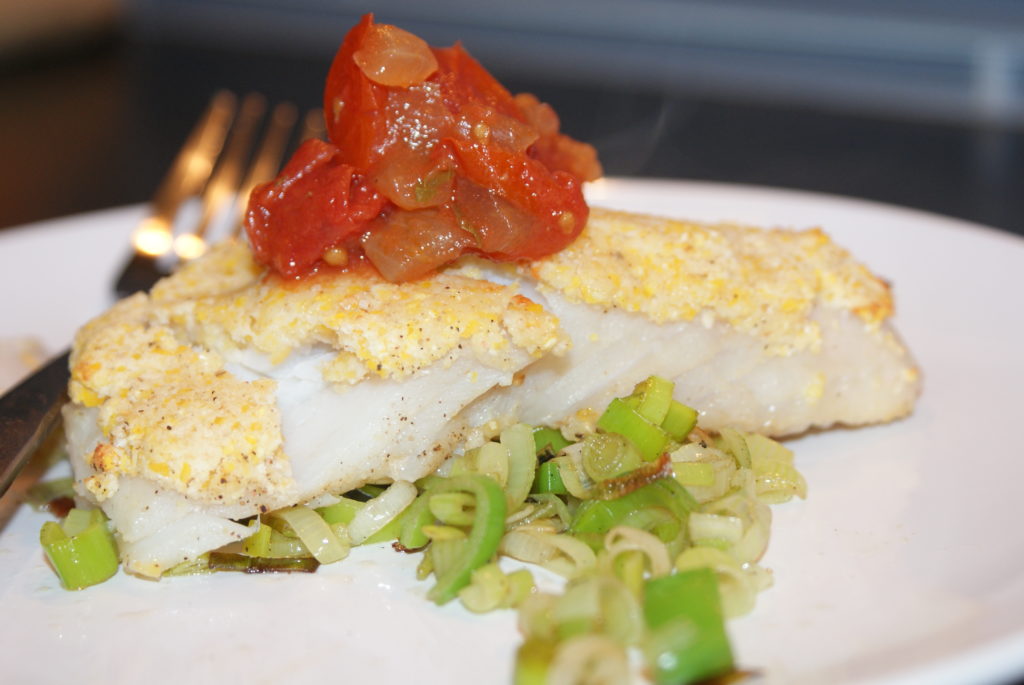Salmon has been a staple of the diet of northern Europeans for centuries, and they are particularly fond of oily fish, which are high in omega-3 fatty acids. The omega-3 fatty acid, also known as DHA, is an essential fatty acid that is necessary for healthy brain and eye development.
Have you ever wondered how much fish you should eat to maintain a healthy diet? Have you ever tried to figure out the nutritional value of different types of fish? If so, you’ve come to the right place. Here you’ll find all the information you need to start considering fish more seriously in your diet.
Homemade cod catch is a great way to ensure that one is getting their omega 3s. By avoiding the usage of chemicals and the use of fish hatcheries, one can pick up some great superfoods like Haddock. Haddock has a very high omega 3 content and has the benefit of a low calorie count.
A Quick Look
Haddock is a white fish with a moderate taste and firm white flesh. On both sides of the Atlantic Ocean, it may be found. It is usually offered as fillets, both fresh and smoked, and is widely regarded as Britain’s “fish and chips.” Poaching, baking, roasting, sauteing, and grilling are just a few methods to cook haddock.
Overview
Haddock is a saltwater fish that may be found on both sides of the Atlantic. A black stripe running longitudinally along its white side and an unique splotch over the pectoral fin, often referred to as a “thumbprint,” make it easy to identify. Haddock is a popular fish that comes in a variety of forms, including fresh, smoked, dried, frozen, and, to a lesser degree, tinned. It’s one among Scotland’s and Britain’s most popular fish, especially when paired with the ever-popular fish and chips.
Identification
Haddock is often sold as fillets, although it may also be purchased whole or as steaks. Fresh haddock has white firm flesh with a transparent appearance, while older fillets have a chalky, hazy appearance. Depending on personal taste, smoked haddock may be off white or yellow in color (dyed). Fresh haddock may be found in the seafood section of grocery shops or at your local fishmonger.
Nutritional Information
A 193-gram uncooked fillet provides around 143 calories, 31.5 grams of protein, and 0.9 grams of fat. There are no carbs, fiber, or sugar in it.
Vitamin B6 and B12, magnesium, niacin, phosphorus, and selenium are all abundant in haddock. Haddock, like other fish, contains Omega-3 fatty acids, which may have a variety of health advantages. It’s also worth mentioning that haddock has a high cholesterol content (104 g).
Selection
Haddock that is as fresh as possible should always be chosen. A strong texture and a dazzling white look suggest this. When buying a whole fish, make sure the eyes are bright and clear, and the gills are red. Haddock should have a little sea scent to it when it’s fresh. Any that have a “fishy” odor should be avoided.
Storage
Haddock, like other fish, may be kept for a short time in the refrigerator’s coldest section, but it’s best consumed as soon as possible.
Place fresh haddock in a plastic bag, then in a bag of ice before keeping it in the refrigerator to keep it extra cool.
Wrap any leftovers securely in plastic wrap or foil and refrigerate for up to 3 or 4 days after cooking.
Preparation
Fresh haddock has a delicate taste and texture, making it a popular choice among people who don’t like stronger fish like salmon. It is most known for being battered and deep fried in the traditional “fish and chips,” but it may also be cooked in a variety of other ways, including poaching, baking, roasting, sauteing, and grilling. The fish should be flaky and juicy once cooked.
Fresh or smoked haddock may also be used to make a wonderful fish chowder.
Haddock with Cornmeal Crushes

The cornmeal crust adds a nice crunch and a nice textural contrast to the haddock, which is soft and buttery. This is a simple meal that will have you looking like a seasoned home chef in no time!
Ingredients
Crust: cornmeal 1/4 cup coconut flour 1 tbsp hot water 2 tbsp egg 1 salt 1/4 tsp coriander, ground 1/4 tsp Haddock: haddock fillets 2 salt & pepper season with
Directions
15-minute prep time 15 minutes to prepare 2 fillets per batch
Preheat your oven to 375 degrees Fahrenheit.
To make the crust:
Combine all of the crust ingredients in a mixing bowl and whisk until well mixed. Once everything is thoroughly mixed, use your hands to crush and compress the mixture.
For the haddock, prepare the following:
Season both sides of the haddock fillets with salt and freshly ground black pepper. Place the fillets on a pan that has been gently oiled.
Cooking and assembly:
Cover each piece of haddock with a very thin coating of crust and gently press it into place until it has set.
Place the fish in the oven and bake for 10-12 minutes, or until done. If the crust isn’t golden brown enough, turn the oven to broil and put the fish on the top rack until it’s gently toasted.
Enjoy with your favorite side dishes!
Book of Free Recipes
Every month, the Encyclopedia of Food grows as we include new delicacies and stunning food photography. Simply click this link to keep up with the latest news. Following that, we’ll give you a complimentary copy of our recipe book. We’ll also notify you when we introduce new and tasty items to the site.
For a free copy of the Encyclopedia of Food recipe book, go here.
Foods That Are Related
Haddock, also known as hake, is a type of fish that has a mild taste and can be eaten raw, baked, fried, or braised. It is a traditional food of the British Isles, where it is often eaten as a snack or served as an accompaniment to meals, while in North America it is more often used as a secondary ingredient in stews.. Read more about gourmet haddock recipes and let us know what you think.
{“@context”:”https://schema.org”,”@type”:”FAQPage”,”mainEntity”:[{“@type”:”Question”,”name”:”What goes well with haddock?”,”acceptedAnswer”:{“@type”:”Answer”,”text”:”
Haddock goes well with a variety of foods, but it is commonly served with mashed potatoes and vegetables.”}},{“@type”:”Question”,”name”:”Why do you cook haddock in milk?”,”acceptedAnswer”:{“@type”:”Answer”,”text”:”
I cook haddock in milk because it is a classic dish that goes well with the sauce.”}},{“@type”:”Question”,”name”:”What temp should haddock be cooked at?”,”acceptedAnswer”:{“@type”:”Answer”,”text”:”
Haddock should be cooked at a temperature of 145 degrees Fahrenheit.”}}]}
Frequently Asked Questions
What goes well with haddock?
Haddock goes well with a variety of foods, but it is commonly served with mashed potatoes and vegetables.
Why do you cook haddock in milk?
I cook haddock in milk because it is a classic dish that goes well with the sauce.
What temp should haddock be cooked at?
Haddock should be cooked at a temperature of 145 degrees Fahrenheit.
Related Tags
This article broadly covered the following related topics:
- haddock nutritional benefits
- haddock nutrition
- haddock nutrition facts
- haddock fish nutrition
- haddock nutrition facts cooked
 HQ Grande Prairie HQ Grandie Prairie is an online news portal aimed at providing latest day to day happenings of the World to its viewers.
HQ Grande Prairie HQ Grandie Prairie is an online news portal aimed at providing latest day to day happenings of the World to its viewers.
